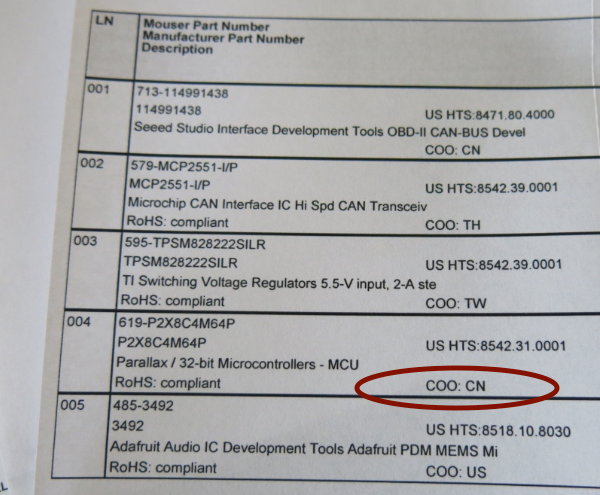What would it take to get the Propeller 2 AEC-Q100 certified? That might have a significant value. Much domestic semiconductor use is automotive, and the Propeller has a lot of capability that fits very nicely with automotive ECU usage.
I don't know. A lot of other automotive-focused chips have complex peripherals that are easier to program in assembly or low-level-c. It seems like automotive engineers are a lot more likely to spend time optimizing the timing of an i/o signal than many other applications would benefit from. Programming in assembly is likely still somewhat reasonable in that space.
I feel like the most useful tool that could be created would be a graphical pll programmer similar to the clock tree panel in Stm32CubeMX.
Comments
Well UPS shipping said it came through DFW, TX but I guess it was ordered through Mouser in Hong Kong for Asia Pac region.
The P2 is fabricated in Gresham, Oregon. No aspect of the manufacturing (including packaging) occurs in China.
I'm not sure where Mouser obtained China as the country of origin, but I'll contact them to fix the issue.
Ken Gracey
Still shows the wrong P2 COO in another new P2 order I made this week.

What would it take to get the Propeller 2 AEC-Q100 certified? That might have a significant value. Much domestic semiconductor use is automotive, and the Propeller has a lot of capability that fits very nicely with automotive ECU usage.
Think some different direction in development tools would probably be needed to have a shot here.
I don't know. A lot of other automotive-focused chips have complex peripherals that are easier to program in assembly or low-level-c. It seems like automotive engineers are a lot more likely to spend time optimizing the timing of an i/o signal than many other applications would benefit from. Programming in assembly is likely still somewhat reasonable in that space.
I feel like the most useful tool that could be created would be a graphical pll programmer similar to the clock tree panel in Stm32CubeMX.